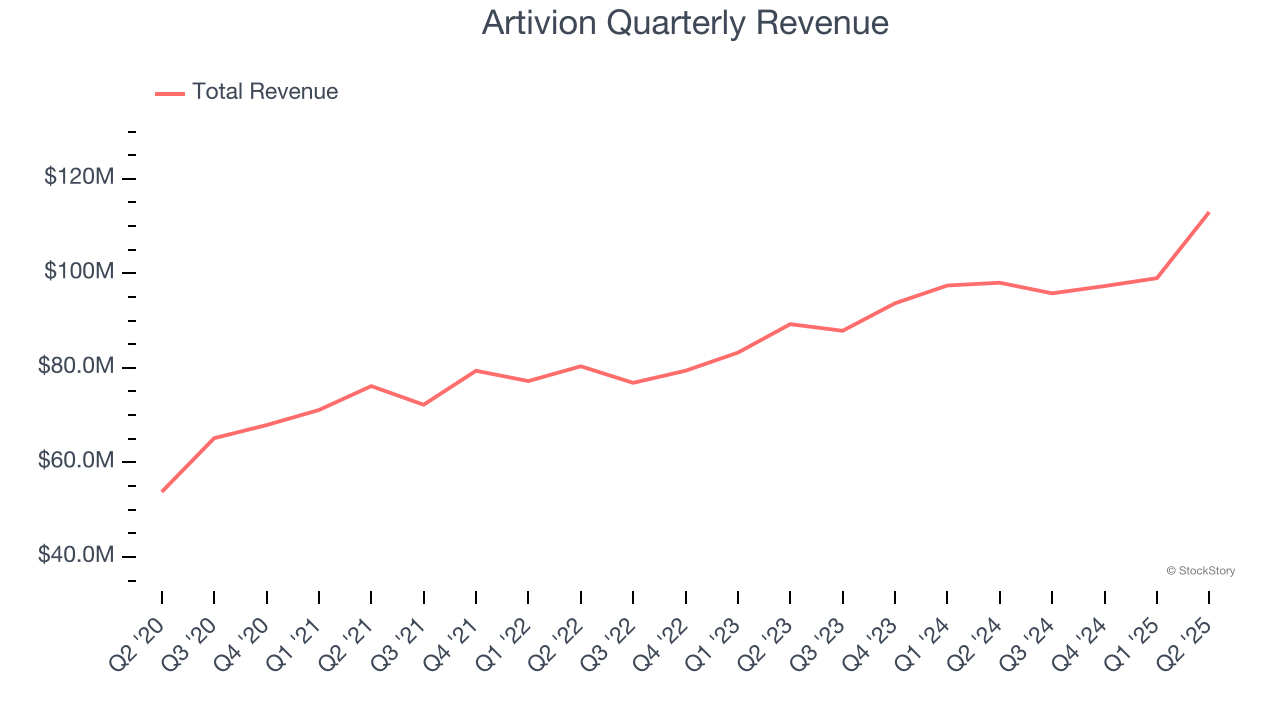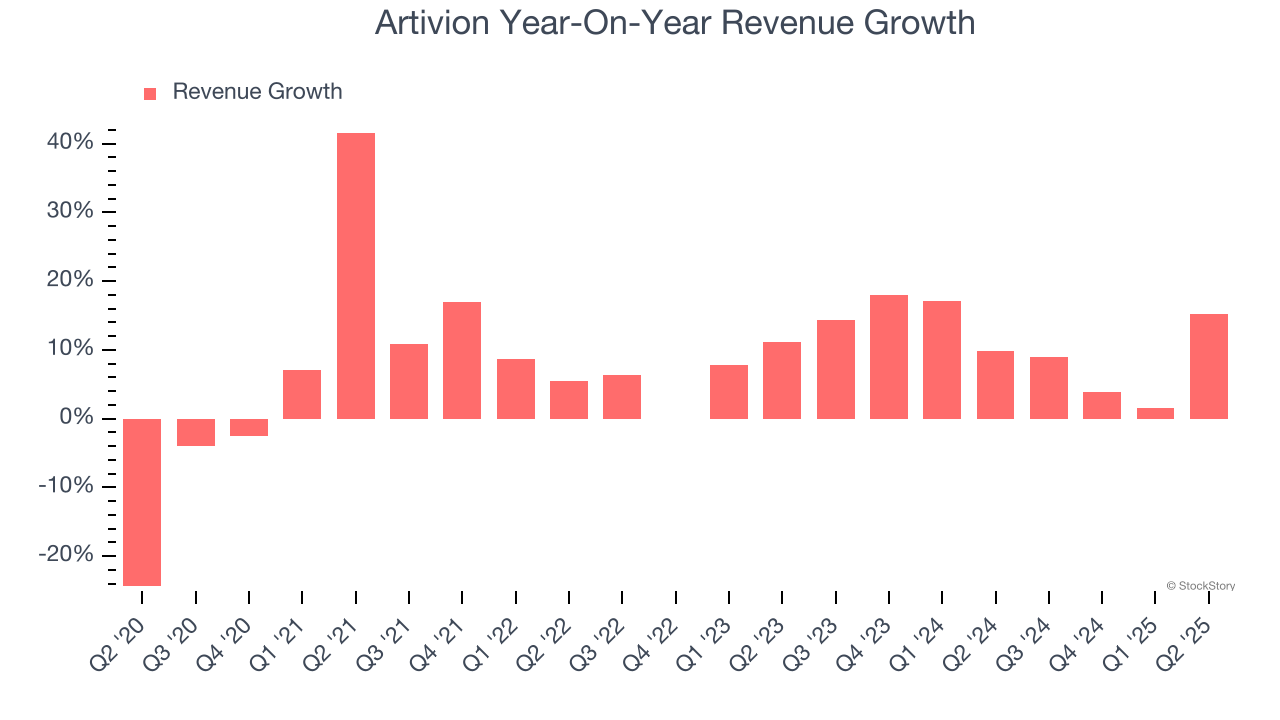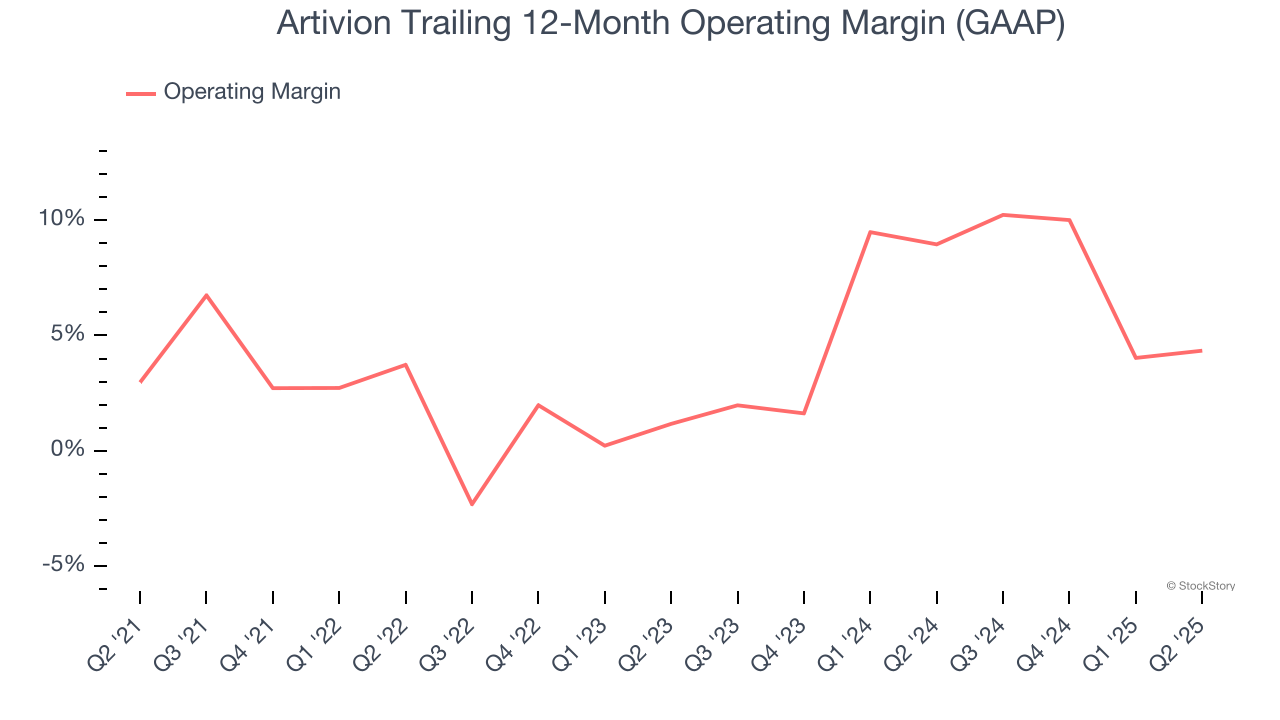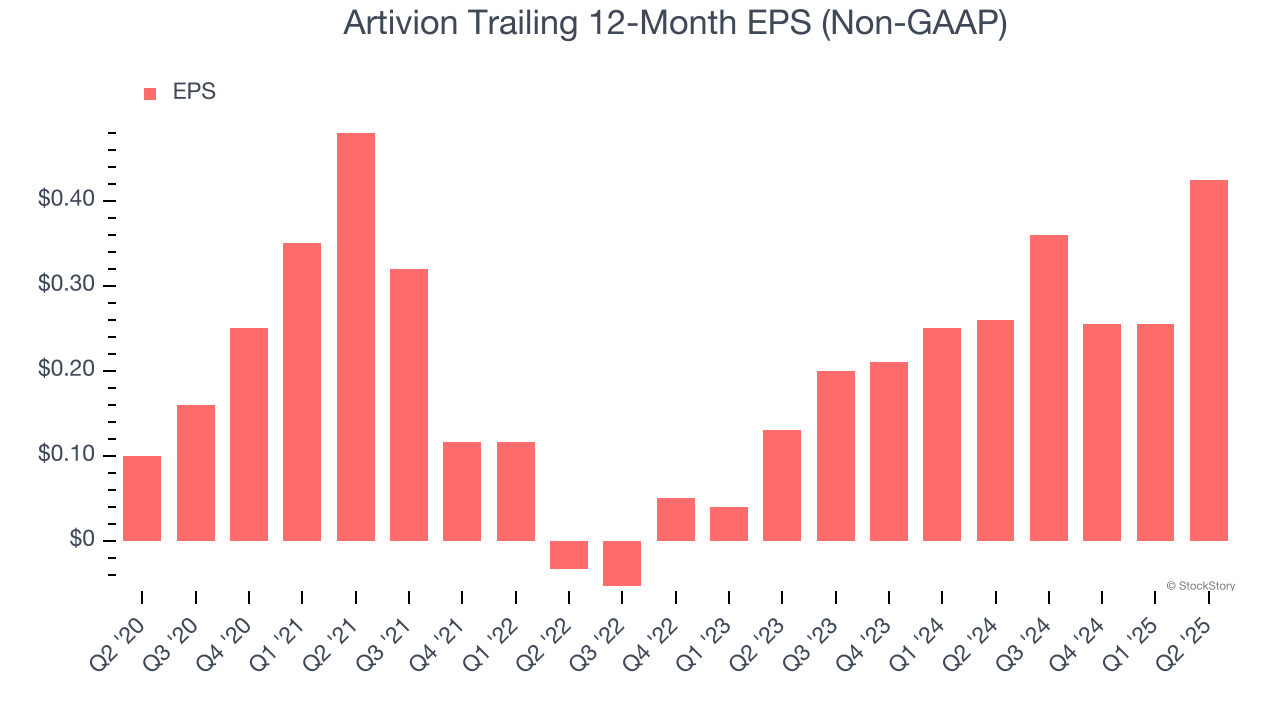
Medical device company Artivion (NYSE:AORT) reported Q2 CY2025 results exceeding the market’s revenue expectations, with sales up 15.3% year on year to $113 million. The company’s full-year revenue guidance of $439 million at the midpoint came in 2.7% above analysts’ estimates. Its non-GAAP profit of $0.24 per share was 92% above analysts’ consensus estimates.
Is now the time to buy Artivion? Find out by accessing our full research report, it’s free.
Artivion (AORT) Q2 CY2025 Highlights:
- Revenue: $113 million vs analyst estimates of $108.2 million (15.3% year-on-year growth, 4.4% beat)
- Adjusted EPS: $0.24 vs analyst estimates of $0.13 (92% beat)
- Adjusted EBITDA: $24.76 million vs analyst estimates of $21.1 million (21.9% margin, 17.4% beat)
- The company lifted its revenue guidance for the full year to $439 million at the midpoint from $429 million, a 2.3% increase
- EBITDA guidance for the full year is $88.5 million at the midpoint, above analyst estimates of $86.63 million
- Operating Margin: 7.4%, in line with the same quarter last year
- Free Cash Flow Margin: 10.4%, up from 3.7% in the same quarter last year
- Market Capitalization: $1.54 billion
"The second quarter was exceptionally strong as we made progress across each of our strategic initiatives while delivering 14% constant currency revenue growth. Revenue growth was driven by year-over-year growth in On-X of 24%, stent grafts of 24%, BioGlue of 4%, and Preservation Services of 3%, all compared to the second quarter of 2024. On a constant currency basis, year-over-year On-X, stent grafts, BioGlue and preservation services grew 24%, 22%, 4% and 3%, respectively. In addition to our strong revenue performance, adjusted EBITDA grew 33% this quarter over the same period last year, which we believe demonstrates our ability to scale the business and continue to expand adjusted EBITDA margins," said Pat Mackin, Chairman, President, and Chief Executive Officer.
Company Overview
Formerly known as CryoLife until its 2022 rebranding, Artivion (NYSE:AORT) develops and manufactures medical devices and preserves human tissues used in cardiac and vascular surgical procedures for patients with aortic disease.
Revenue Growth
A company’s long-term performance is an indicator of its overall quality. Any business can experience short-term success, but top-performing ones enjoy sustained growth for years. Luckily, Artivion’s sales grew at a decent 9.5% compounded annual growth rate over the last five years. Its growth was slightly above the average healthcare company and shows its offerings resonate with customers.

Long-term growth is the most important, but within healthcare, a half-decade historical view may miss new innovations or demand cycles. Artivion’s annualized revenue growth of 11% over the last two years is above its five-year trend, suggesting some bright spots. 
This quarter, Artivion reported year-on-year revenue growth of 15.3%, and its $113 million of revenue exceeded Wall Street’s estimates by 4.4%.
Looking ahead, sell-side analysts expect revenue to grow 11.8% over the next 12 months, similar to its two-year rate. This projection is noteworthy and implies the market is forecasting success for its products and services.
Software is eating the world and there is virtually no industry left that has been untouched by it. That drives increasing demand for tools helping software developers do their jobs, whether it be monitoring critical cloud infrastructure, integrating audio and video functionality, or ensuring smooth content streaming. Click here to access a free report on our 3 favorite stocks to play this generational megatrend.
Operating Margin
Artivion was profitable over the last five years but held back by its large cost base. Its average operating margin of 4.4% was weak for a healthcare business.
On the plus side, Artivion’s operating margin rose by 1.4 percentage points over the last five years, as its sales growth gave it operating leverage. This performance was mostly driven by its recent improvements as the company’s margin has increased by 3.2 percentage points on a two-year basis.

In Q2, Artivion generated an operating margin profit margin of 7.4%, in line with the same quarter last year. This indicates the company’s overall cost structure has been relatively stable.
Earnings Per Share
We track the long-term change in earnings per share (EPS) for the same reason as long-term revenue growth. Compared to revenue, however, EPS highlights whether a company’s growth is profitable.
Artivion’s EPS grew at an astounding 33.5% compounded annual growth rate over the last five years, higher than its 9.5% annualized revenue growth. This tells us the company became more profitable on a per-share basis as it expanded.

We can take a deeper look into Artivion’s earnings to better understand the drivers of its performance. As we mentioned earlier, Artivion’s operating margin was flat this quarter but expanded by 1.4 percentage points over the last five years. This was the most relevant factor (aside from the revenue impact) behind its higher earnings; interest expenses and taxes can also affect EPS but don’t tell us as much about a company’s fundamentals.
In Q2, Artivion reported adjusted EPS at $0.24, up from $0.07 in the same quarter last year. This print easily cleared analysts’ estimates, and shareholders should be content with the results. Over the next 12 months, Wall Street expects Artivion’s full-year EPS of $0.42 to grow 76.1%.
Key Takeaways from Artivion’s Q2 Results
We were impressed by how significantly Artivion blew past analysts’ EPS expectations this quarter. We were also glad its full-year revenue guidance exceeded Wall Street’s estimates. Zooming out, we think this was a good print with some key areas of upside. The stock traded up 13.1% to $37 immediately following the results.
Sure, Artivion had a solid quarter, but if we look at the bigger picture, is this stock a buy? The latest quarter does matter, but not nearly as much as longer-term fundamentals and valuation, when deciding if the stock is a buy. We cover that in our actionable full research report which you can read here, it’s free.
